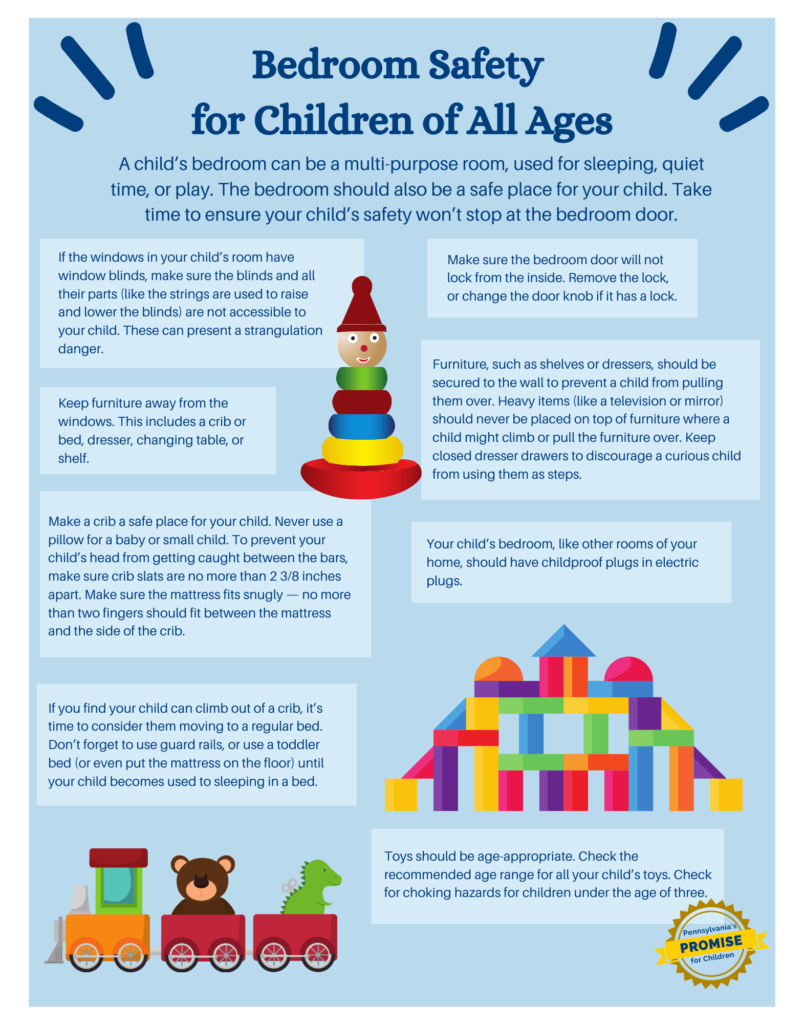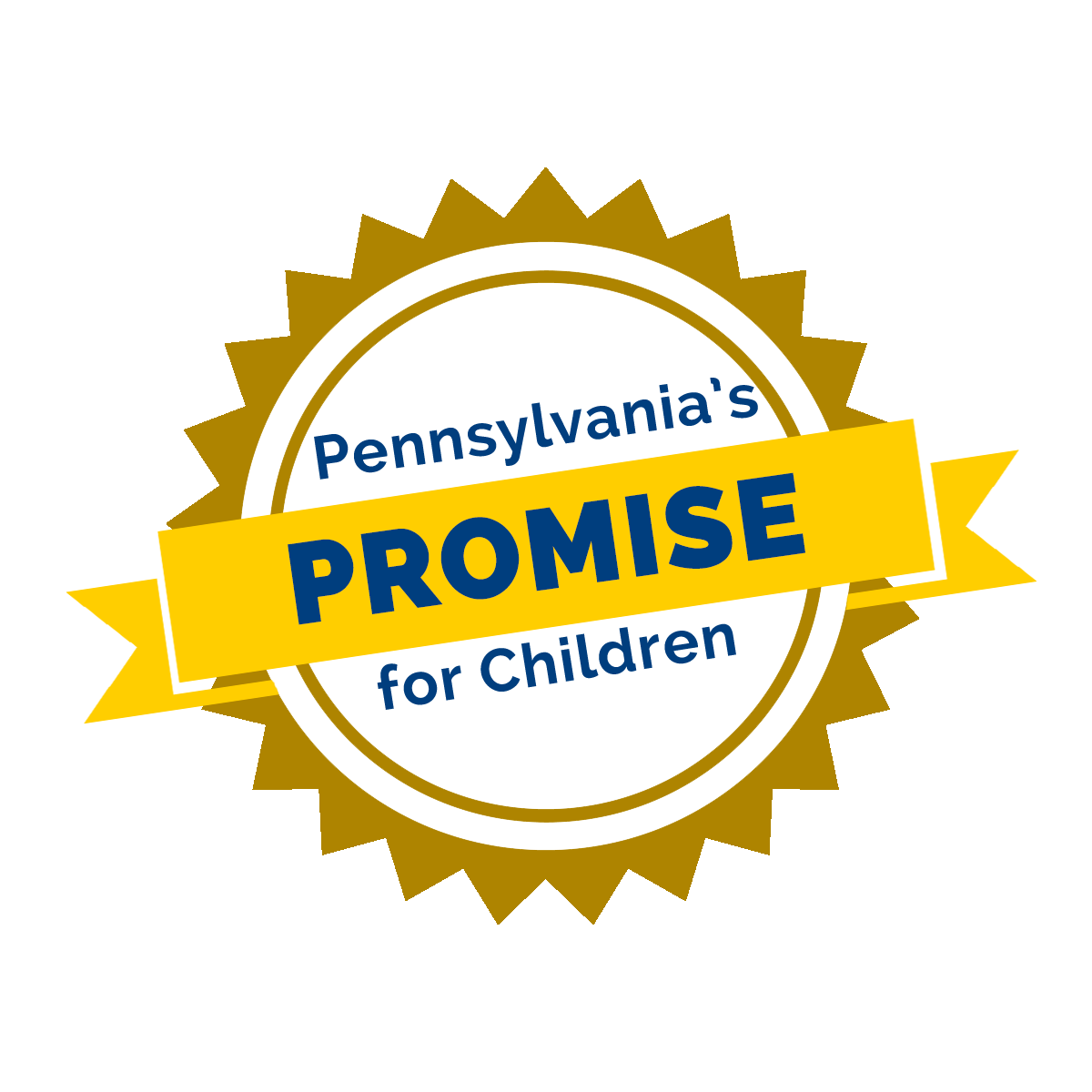
(Prints on legal size 11×14 inch paper.)
A child’s bedroom can be a multi-purpose room for sleeping, quiet time, or play. The bedroom should also be a safe place for your child. Ensure your child’s safety won’t stop at the bedroom door.
Here are a few tips to get you started.
For a complete listing, talk to your pediatrician or visit your library for books and resources to make your home safer for your child.
- If the windows in your child’s room have window blinds, ensure the blinds and all their parts (like the strings used to raise and lower the blinds) are not physically reachable to your child. These can present a strangulation danger.
- Furniture, such as shelves or dressers, should be secured to the wall to prevent a child from pulling them over. Heavy items (like a television or mirror) should never be placed on top of furniture where a child might climb or pull the furniture over. Keep closed dresser drawers to discourage a curious child from using them as steps.
- Keep furniture away from the windows. This includes a crib, bed, dresser, changing table, or shelf.
- Make sure the bedroom door will not lock from the inside. Remove the lock, or change the door knob if it has a lock.
- Your child’s bedroom, like other rooms of your home, should have childproof plugs in electric plugs.
- Make a crib a safe place for your child. Never use a pillow for a baby or small child. To prevent your child’s head from getting caught between the bars, ensure crib slats are no more than 2 3/8 inches apart. Ensure the mattress fits snugly — no more than two fingers should fit between the mattress and the side of the crib.
- If you find your child can climb out of a crib, it’s time to consider her moving to a regular bed. Don’t forget to use guard rails or a toddler bed (or even put the mattress on the floor) until your child becomes used to sleeping in a bed.
- Toys should be age-appropriate. Check the recommended age range for all your child’s toys. Check for choking hazards for children under the age of three.
